The rumours and leaked photos are over. Ableton announced in the morning Live 10, the next generation of their digital audio workstation. After the Berlin based company launched Live 9 in 2013, 4 years have passend now in which much was done on the software for free, as well as Push 2 was introduced. In the past 4 years, the company released amazing big updates (9.5) that were available for free what is in my opinion a big deal in today’s software world. I know only a few software companies that offered this amount of updates for free (Image Line…). To be honest, I appreciate this update policy from Ableton and send my great respect to the team in Berlin. 4 years ago, before my work as music media, I invested 200€ in the Live 9 update and I don’t regret it until today.
Enough with the eulogies on Live 9, today the company has taken another big step forward in simplifying music production. With Live 10, the company introduced four powerful new devices, a completely re-designed sound library, major workflow-accelerating refinements and much more.
Live 10 comes with several new devices and features now per example a new deep wavetable Synthesizer that comes with a big amount of wavetables crafted from old synths but also from other sound sources. All these is powered by modeled analog filters and a flexible modulation section. For me a big step forward is the better integration of the interface of devices, especially the new synth. It no longer hangs on the lower part of the surface or it opens an extra window. Everything looks now smoother and better integrated in the Live environment. Than it comes with a new device named Echo that can deliver sounds from classic analog to digital textures.
Very curious to hear this new device because they describe the possible sounds in these words: textures in diffused soundscapes, wailing feedback and other experimental atmospheres. Another cool addition are the new drum devices based on synthesis and three new pedals based on circuit-level models of overdrive, distortion and fuzz.
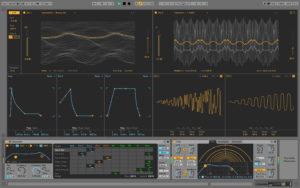
New Devices, new sounds: A new instrument and three new effects bring a broader, bolder palette of sound to Live.
- Wavetable is Ableton’s new synth. Its vast sonic palette is created with a variety of waveforms derived from analog synths and a range of other instruments and sounds, as well as modeled analog filters, and deep, flexible modulation.
- Echo delivers sounds from classic analog and digital textures to diffused soundscapes, wailing feedback and other experimental atmospheres.
- Drum Buss is an all-in-one drum sculpting tool for adding warmth, adjusting transient response, injecting low end and more.
- Pedal features three separate circuit-level models of overdrive, distortion and fuzz guitar pedals. Not just for guitars, it excels at warming up vocals, driving synth sounds or smashing drums.
Beside the new devices, the Ableton crew also enhanced a lot the workflow for faster music creation. The new design of the interface is certainly no surprise. I thought it would change more in the design, but in the end it’s a good decision to make it more modern in the same design. A super new feature in my opinion is capture recalls that allows you to recall ideas without pressing the record button. Live 10 record in the background your spontaneous ideas and if you like something, you press on the top of the interface the recall button and your ideas will be transformed in a midi clip. Super handy and creative feature in my opinion. After many requests from users, it’s also now possible to edit multiple MIDI clips at ones. With this new feature, you can work faster and more intuitive.
Faster music creation
Live 10 offers a multitude of workflow refinements and entirely new features that make working with ideas easier at every stage of the creative process. Some of these improvements include:
- Live’s interface has been updated to be cleaner and clearer with sharper graphics and refined colors. And a range of optimized themes improves visibility in all environments.
- Capture recalls an idea after it has been played and turns it into a MIDI clip with feel and groove intact—a fast, intuitive way to turn spontaneous inspiration into music.
- Multiple MIDI clip editing shows the content of two or more clips in one view for better control of the musical relationships in a song.
- Arrangement View improvements such as nudging, time stretching, one-key zooming and drag-and-drop track duplication make editing faster and easier.
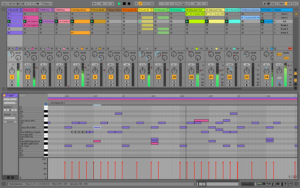
- Browser Collections provide at-a-glance access to favourite or most-used musical elements.
- Groups within groups improves Set organization even with lots of tracks and a detailed arrangement—multiple tracks and groups can be folded together for a simple overview.
- Note chasing triggers MIDI notes even if playback starts in the middle—the note doesn’t need to be started from the beginning to hear pads or other sustained notes.
- I/O Renaming lets producers easily select the right routing by labeling Live’s inputs and outputs to match the instruments and hardware in the studio.
- Mixing improvements including improved gain range and Bass Mono feature in Utility, extended low frequency slopes on EQ Eight and Split Stereo Pan provide more detailed control when mixing.
Also good to see is the new sound library. The Ableton sound designers re-designed the entire core library (4 years old) and developed many new packs. Essential instruments per example features four new packs including synths, and multi-sampled electric keys and drums. I’m using a lot the core library so I’m curious to hear the sounds and the improvements.

New library of sound
With a re-designed Core Library and all-new Packs, Live 10 has more inspiring sounds that are ready for music making, right out of the box.
- The Core Library gets a sonic upgrade with richer, more detailed sounds. It has also been reorganized to make those sounds easier to find.
- Essential Instruments are four new Packs including synths, and multi-sampled electric keys and drums.
- Curated Collections are carefully compiled Packs that capture the musical threads that tie together evolving styles and scenes—each containing instruments, clips and samples that share a common sonic theme. 2
There are also news for Push 2 users. Many have expected a Push 3 but if you know Ableton, they continue the product care here. With the new Live 10, they bring major new functionalities and new high-resolution visualizations to Push what is in my opinion a big step forward for this controller.
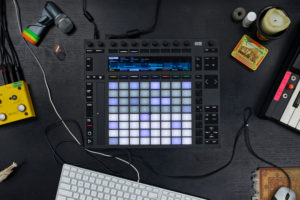
More hands-on control with Push
Live 10 brings new functionality and new high-resolution visualizations to Push.
- A new step sequencing layout allows simultaneous note sequencing and real time playing.
- Notes in a clip are displayed directly on Push for easier navigation and refinement.
- Detailed views show the interfaces of key Ableton Devices including Wavetable, Echo, EQ Eight and Compressor.
- Workflow improvements to layouts, building and extending patterns, track arming and more give beat makers a more fluid experience while in the creative process.
Of course, a Live update must have Max For Live news. After Cycling’74 is an Ableton company, the integration is now even more intense in Live 10. Max for Live is now full integrated in the system what is an amazing new in my opinion. They load faster, consumes less CPU and looks better, three main things that improves a lot the workflow in my opinion. Also super exciting are the new audio routing possibilities that allows multi-channel audio routing, especially excellent for sound installations and performances. Also the new advanced and improved MIDI-hardware integration is the right direction for working better in a hybrid setup.
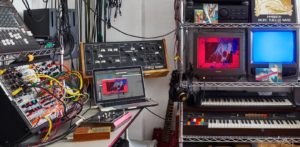
Max for Live – no limits, built in
Max for Live is now built into Live 10, providing faster, more stable performance.
- A fully integrated Max for Live means Max for Live devices now load faster, use less CPU and feel more like Live’s native Devices.
- New audio routing capabilities enable multi-channel audio routing for performances, installations and theaters using multi-channel speaker setups.
- Updated Devices include sonically upgraded Drum Synths, improved modulation and mapping Devices and more.
- Advanced MIDI–hardware integration is possible now Max for Live devices can send and receive SysEx, allowing deeper access to synthesizers—including full preset backup dumps, parameter control and more. Max for Live can also create custom control surfaces for custom hardware integration.
The question of the questions at the end: When will it come and what will it cost? Ableton Live 10 will be available in the first quarter of 2018. If you are not yet a user of Live, you can purchase now Live 9 with an 20% off discount and received a free upgrade to Live 10. (standard or suite).
As usual, Live 10 will come in three different versions.
Download
- Live Intro: 79 EUR / 99 USD / 69 GBP
- Live Standard: 349 EUR / 449 USD / 319 GBP
- Live Suite: 599 EUR / 749 USD / 539 GBP
Boxed
- Live Intro: 99 EUR / 99 USD / 89 GBP
- Live Standard: 399 EUR / 499 USD / 359 GBP
- Live Suite: 649 EUR / 799 USD / 579 GBP
Existing Ableton Live owners should log into their accounts to check upgrade pricing.
I’m a Ableton 9 Suite user and my current upgrade price would be 199€ with a 20% introduction discount. After this it will be 249€. Super fair upgrade offer in my opinion since I have paid nothing for updates in the last 4 years. If you calculate this, you have to pay 50€ per year. A very good offer in my opinion.
More information here: Ableton Live 10
Available here: Ableton Live 9 & free upgrade
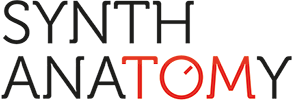
Be the first to comment